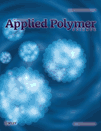Sulfonated polyimide/chitosan composite membrane for vanadium redox flow battery: Membrane preparation, characterization, and single cell performance
Abstract
A novel sulfonated polyimide/chitosan (SPI/CS) composite membrane was prepared from self-made SPI (50% of sulfonation degree) through an immersion and self-assembly method, which was successfully applied in vanadium redox flow battery (VRB). The proton conductivity of SPI/CS composite membrane is effectively improved compared to the plain SPI membrane. The VO2+ permeability coefficient across SPI/CS composite membrane is 1.12 × 10−7 cm2 min−1, which is only one tenth of that of Nafion® 117 membrane. Meanwhile, the proton selectivity of SPI/CS composite membrane is about eight times higher than that of Nafion® 117 membrane. In addition, the oxidative stability SPI/CS composite membrane is superior to that of pristine SPI membrane. The VRB single cell using SPI/CS composite membrane showed higher energy efficiency (88.6%) than that using Nafion® 117 membrane, indicating that SPI/CS composite membrane is a promising proton conductive membrane for VRB application. © 2012 Wiley Periodicals, Inc. J. Appl. Polym. Sci., 2013




